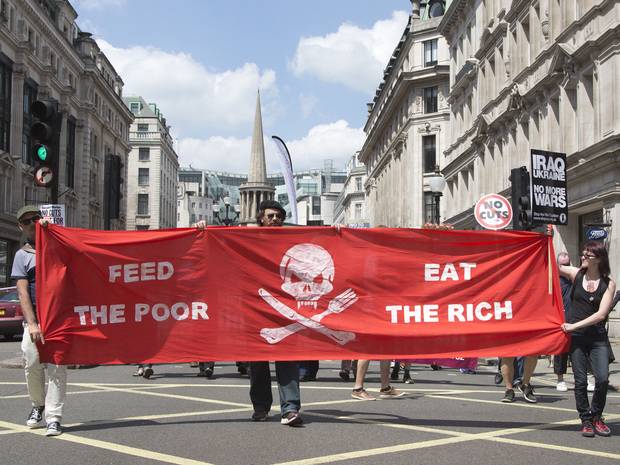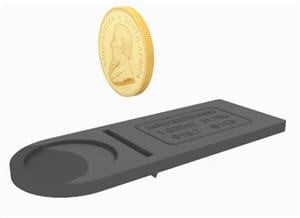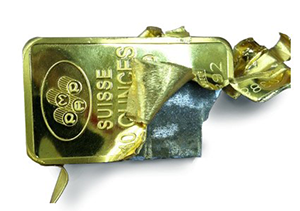(
Dan Bacher)
The city of Sacramento is in the fourth year of a record drought – yet
the Nestlé Corporation continues to bottle city water to sell back to
the public at a big profit, local activists charge.
The Nestlé Water Bottling Plant in Sacramento is the target of a
major press conference on Tuesday, March 17, by a water coalition that
claims the company is draining up to 80 million gallons of water a year
from Sacramento aquifers during the drought.
The coalition, the crunchnestle alliance, says that City Hall has
made this use of the water supply possible through a “corporate welfare
giveaway,” according to a press advisory.
A coalition of environmentalists, Native Americans and other
concerned people announced the press conference will take place at March
17 at 5 p.m. at new Sacramento City Hall, 915 I Street, Sacramento.
The coalition will release details of a protest on Friday, March 20,
at the South Sacramento Nestlé plant designed to “shut down” the
facility. The coalition is calling on Nestlé to pay rates commensurate
with their enormous profit, or voluntarily close down.
“The coalition is protesting Nestlé’s virtually unlimited use of
water – up to 80 million gallons a year drawn from local aquifers –
while Sacramentans (like other Californians) who use a mere 7 to 10
percent of total water used in the State of California, have had severe
restrictions and limitations forced upon them,” according to the
coalition.
“Nestlé pays only 65 cents for each 470 gallons it pumps out of the
ground – the same rate as an average residential water user. But the
company can turn the area’s water around, and sell it back to Sacramento
at mammoth profits,” the coalition said.
Activists say that Sacramento officials have refused attempts to
obtain details of Nestlé’s water used. Coalition members have addressed
the Sacramento City Council and requested that Nestle’ either pay a
commercial rate under a two tier level, or pay a tax on their profit.
In October, the coalition released a “White Paper” highlighting
predatory water profiteering actions taken by Nestle’ Water Bottling
Company in various cities, counties, states and countries. Most of those
great “deals” yielded mega profits for Nestle’ at the expense of
citizens and taxpayers. Additionally, the environmental impact on many
of those areas yielded disastrous results.
Coalition spokesperson Andy Conn said, “This corporate welfare
giveaway is an outrage and warrants a major investigation. For more than
five months we have requested data on Nestlé water use. City Hall has
not complied with our request, or given any indication that it will.
Sacramentans deserve to know how their money is being spent and what
they’re getting for it. In this case, they’re getting ripped off.”
For more information about the crunchnestle alliance, contact Andy
Conn (530) 906-8077 camphgr55 (at) gmail.com or Bob Saunders (916)
370-8251
The press conference and protest will take place just days after Jay
Famiglietti, the senior water scientist at the NASA Jet Propulsion
Laboratory/Caltech and a professor of Earth system science at UC Irvine,
revealed in an op-ed in the LA Times on March 12 that California has
only one year of water supply left in its reservoirs. (
http://touch.latimes.com/#section/-1/article/p2p-83043355/)
“As difficult as it may be to face, the simple fact is that
California is running out of water — and the problem started before our
current drought. NASA data reveal that total water storage in California
has been in steady decline since at least 2002, when satellite-based
monitoring began, although groundwater depletion has been going on since
the early 20th century.
Right now the state has only about one year of water supply left in
its reservoirs, and our strategic backup supply, groundwater, is rapidly
disappearing. California has no contingency plan for a persistent
drought like this one (let alone a 20-plus-year mega-drought), except,
apparently, staying in emergency mode and praying for rain.”
Meanwhile, Governor Jerry Brown continues to fast-track his Bay Delta
Conservation Plan (BDCP) to build the peripheral tunnels to ship
Sacramento River water to corporate agribusiness, Southern California
water agencies, and oil companies conducting fracking operations. The
$67 billion plan won’t create one single drop of new water, but it will
take vast tracts of Delta farm land out of production under the guise of
“habitat restoration” in order to irrigate drainage-impaired soil owned
by corporate mega-growers on the west side of the San Joaquin Valley.
The tunnel plan will also hasten the extinction of Sacramento River
Chinook salmon, Central Valley steelhead, Delta and longfin smelt, green
sturgeon and other fish species, as well as imperil the salmon and
steelhead populations on the Klamath and Trinity rivers. The peripheral
tunnels will be good for agribusiness, water privateers, oil companies
and the 1 percent, but will be bad for the fish, wildlife, people and
environment of California and the public trust.
The Delta smelt may already be extinct in the wild!
In fact, the endangered Delta smelt, once the most abundant fish in
the entire Bay Delta Estuary, may already be extinct, according to UC
Davis fish biologist and author Peter Moyle, as quoted on Capital Public
Radio.
“Prepare for the extinction of the Delta Smelt in the wild,” Moyle
told a group of scientists with the Delta Stewardship Council. (
http://www.capradio.org/articles/2015/03/16/endangered-delta-smelt-may-be-extinct))
According to Capital Public Radio:
“He says the latest state trawl survey found very few fish in areas
of the Sacramento-San Joaquin Delta where smelt normally gather.
‘That trawl survey came up with just six smelt, four females and two
males,’ says Moyle. “Normally because they can target smelt, they would
have gotten several hundred.’
Moyle says the population of Delta smelt has been declining for the
last 30 years but the drought may have pushed the species to the point
of no return. If the smelt is officially declared extinct, which could
take several years, the declaration could change how water is managed in
California.
‘All these biological opinions on Delta smelt that have restricted some of the pumping will have to be changed,’ says Moyle.
But Moyle says pumping water from the Delta to Central and Southern
California could still be restricted at certain times because of all the
other threatened fish populations.”
The Delta smelt, an indicator species that demonstrates the health of
the Sacramento-San Joaquin River Delta, reached a new record low
population level in 2014, according to the California Department of Fish
and Wildlife’s fall midwater trawl survey that was released in January.
Department staff found a total of only eight smelt at a total of 100 sites sampled each month from September through December
The smelt is considered an indicator species because the 2.0 to 2.8
inch long fish is endemic to the estuary and spends all of its life in
the Delta.
The California Department of Fish and Wildlife (CDFW) has conducted
the Fall Midwater Trawl Survey (FMWT) to index the fall abundance of
pelagic (open water) fish, including Delta smelt, striped bass, longfin
smelt, threadfin shad and American shad, nearly annually since 1967. The
index of each species is a number that indicates a relative population
abundance. For more information, go to:
http://www.indybay.org/newsitems/2015/01/09/18766643.php
Poster’s footnote:
Nestle plant in Sacramento steals people’s water during a drought and sells it back to them at a great profit.
Nestle markets the people’s water under 17 different brand names in their plastic bottles while clogging the world’s landfills.
1
http://www.dailykos.com/story/2015/03/16/1371402/-Water-coalition-to-hold-press-conference-regarding-shutdown-of-Nestle-Plant?d
2
http://www.nestle-waters.com/brands/all-brands
http://www.dailykos.com/story/2015/03/16/1…
(
Dan Bacher)
The city of Sacramento is in the fourth year of a record drought – yet
the Nestlé Corporation continues to bottle city water to sell back to
the public at a big profit, local activists charge.
The Nestlé Water Bottling Plant in Sacramento is the target of a
major press conference on Tuesday, March 17, by a water coalition that
claims the company is draining up to 80 million gallons of water a year
from Sacramento aquifers during the drought.
The coalition, the crunchnestle alliance, says that City Hall has
made this use of the water supply possible through a “corporate welfare
giveaway,” according to a press advisory.
A coalition of environmentalists, Native Americans and other
concerned people announced the press conference will take place at March
17 at 5 p.m. at new Sacramento City Hall, 915 I Street, Sacramento.
The coalition will release details of a protest on Friday, March 20,
at the South Sacramento Nestlé plant designed to “shut down” the
facility. The coalition is calling on Nestlé to pay rates commensurate
with their enormous profit, or voluntarily close down.
“The coalition is protesting Nestlé’s virtually unlimited use of
water – up to 80 million gallons a year drawn from local aquifers –
while Sacramentans (like other Californians) who use a mere 7 to 10
percent of total water used in the State of California, have had severe
restrictions and limitations forced upon them,” according to the
coalition.
“Nestlé pays only 65 cents for each 470 gallons it pumps out of the
ground – the same rate as an average residential water user. But the
company can turn the area’s water around, and sell it back to Sacramento
at mammoth profits,” the coalition said.
Activists say that Sacramento officials have refused attempts to
obtain details of Nestlé’s water used. Coalition members have addressed
the Sacramento City Council and requested that Nestle’ either pay a
commercial rate under a two tier level, or pay a tax on their profit.
In October, the coalition released a “White Paper” highlighting
predatory water profiteering actions taken by Nestle’ Water Bottling
Company in various cities, counties, states and countries. Most of those
great “deals” yielded mega profits for Nestle’ at the expense of
citizens and taxpayers. Additionally, the environmental impact on many
of those areas yielded disastrous results.
Coalition spokesperson Andy Conn said, “This corporate welfare
giveaway is an outrage and warrants a major investigation. For more than
five months we have requested data on Nestlé water use. City Hall has
not complied with our request, or given any indication that it will.
Sacramentans deserve to know how their money is being spent and what
they’re getting for it. In this case, they’re getting ripped off.”
For more information about the crunchnestle alliance, contact Andy
Conn (530) 906-8077 camphgr55 (at) gmail.com or Bob Saunders (916)
370-8251
The press conference and protest will take place just days after Jay
Famiglietti, the senior water scientist at the NASA Jet Propulsion
Laboratory/Caltech and a professor of Earth system science at UC Irvine,
revealed in an op-ed in the LA Times on March 12 that California has
only one year of water supply left in its reservoirs. (
http://touch.latimes.com/#section/-1/article/p2p-83043355/)
“As difficult as it may be to face, the simple fact is that
California is running out of water — and the problem started before our
current drought. NASA data reveal that total water storage in California
has been in steady decline since at least 2002, when satellite-based
monitoring began, although groundwater depletion has been going on since
the early 20th century.
Right now the state has only about one year of water supply left in
its reservoirs, and our strategic backup supply, groundwater, is rapidly
disappearing. California has no contingency plan for a persistent
drought like this one (let alone a 20-plus-year mega-drought), except,
apparently, staying in emergency mode and praying for rain.”
Meanwhile, Governor Jerry Brown continues to fast-track his Bay Delta
Conservation Plan (BDCP) to build the peripheral tunnels to ship
Sacramento River water to corporate agribusiness, Southern California
water agencies, and oil companies conducting fracking operations. The
$67 billion plan won’t create one single drop of new water, but it will
take vast tracts of Delta farm land out of production under the guise of
“habitat restoration” in order to irrigate drainage-impaired soil owned
by corporate mega-growers on the west side of the San Joaquin Valley.
The tunnel plan will also hasten the extinction of Sacramento River
Chinook salmon, Central Valley steelhead, Delta and longfin smelt, green
sturgeon and other fish species, as well as imperil the salmon and
steelhead populations on the Klamath and Trinity rivers. The peripheral
tunnels will be good for agribusiness, water privateers, oil companies
and the 1 percent, but will be bad for the fish, wildlife, people and
environment of California and the public trust.
The Delta smelt may already be extinct in the wild!
In fact, the endangered Delta smelt, once the most abundant fish in
the entire Bay Delta Estuary, may already be extinct, according to UC
Davis fish biologist and author Peter Moyle, as quoted on Capital Public
Radio.
“Prepare for the extinction of the Delta Smelt in the wild,” Moyle
told a group of scientists with the Delta Stewardship Council. (
http://www.capradio.org/articles/2015/03/16/endangered-delta-smelt-may-be-extinct))
According to Capital Public Radio:
“He says the latest state trawl survey found very few fish in areas
of the Sacramento-San Joaquin Delta where smelt normally gather.
‘That trawl survey came up with just six smelt, four females and two
males,’ says Moyle. “Normally because they can target smelt, they would
have gotten several hundred.’
Moyle says the population of Delta smelt has been declining for the
last 30 years but the drought may have pushed the species to the point
of no return. If the smelt is officially declared extinct, which could
take several years, the declaration could change how water is managed in
California.
‘All these biological opinions on Delta smelt that have restricted some of the pumping will have to be changed,’ says Moyle.
But Moyle says pumping water from the Delta to Central and Southern
California could still be restricted at certain times because of all the
other threatened fish populations.”
The Delta smelt, an indicator species that demonstrates the health of
the Sacramento-San Joaquin River Delta, reached a new record low
population level in 2014, according to the California Department of Fish
and Wildlife’s fall midwater trawl survey that was released in January.
Department staff found a total of only eight smelt at a total of 100 sites sampled each month from September through December
The smelt is considered an indicator species because the 2.0 to 2.8
inch long fish is endemic to the estuary and spends all of its life in
the Delta.
The California Department of Fish and Wildlife (CDFW) has conducted
the Fall Midwater Trawl Survey (FMWT) to index the fall abundance of
pelagic (open water) fish, including Delta smelt, striped bass, longfin
smelt, threadfin shad and American shad, nearly annually since 1967. The
index of each species is a number that indicates a relative population
abundance. For more information, go to:
http://www.indybay.org/newsitems/2015/01/09/18766643.php
Poster’s footnote:
Nestle plant in Sacramento steals people’s water during a drought and sells it back to them at a great profit.
Nestle markets the people’s water under 17 different brand names in their plastic bottles while clogging the world’s landfills.
1
http://www.dailykos.com/story/2015/03/16/1371402/-Water-coalition-to-hold-press-conference-regarding-shutdown-of-Nestle-Plant?d
2
http://www.nestle-waters.com/brands/all-brands














